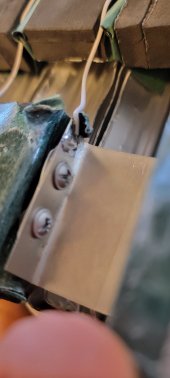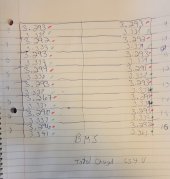lakespyder
New Member
- Joined
- May 2, 2022
- Messages
- 25
OK, this makes sense to me now. That is what Sunshine_eggo meant by "3.500 and 3.557 cells are essentially full, while the others are not."All of the cells are fairly close except those 2 rogue ones. If it were me I would use a load like a head light from a car to bleed those two during charge. Will probably take several charges to correct.
The next question is what do they look like at the bottom?
What is happening is the highest cell is disconnecting the BMS when it reaches the maximum cell voltage. While the other still need considerable change. The result is the total capacity from the artificial top to the bottom is a lot smaller than the advertised capacity.
I didn't understand balancing or how the BMS controls the charge in that manner ("highest cell is disconnecting the BMS when it reaches the maximum cell voltage."). I guess that I was just under the impression that the cells will either hold a certain amount of charge or they wont.
As a newbie, I am a little nervous about trying to bleed those two while charging. By "Will probably take several charges to correct", do you mean several charges while bleeding those two or several charges by just discharging the pack and not bleeding those two? or will not bleeding those 2 ultimately result in a failed pack that never balances?
UPDATED:
I think I misunderstood your last post about how to bleed those cells down using headlights.
Do you mean to charge the battery while on the cart, but leave the headlights on so that those 2 cells will not reach full charge thus allowing the others to get to the desired charge level without the BMS tripping?
Instead of doing this on a bench by fully discharging, then recharge with lights individually hooked to those 2 rogue cells?
Last edited:





